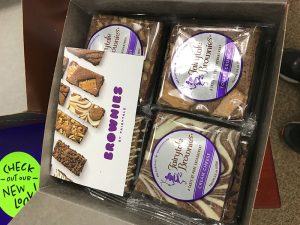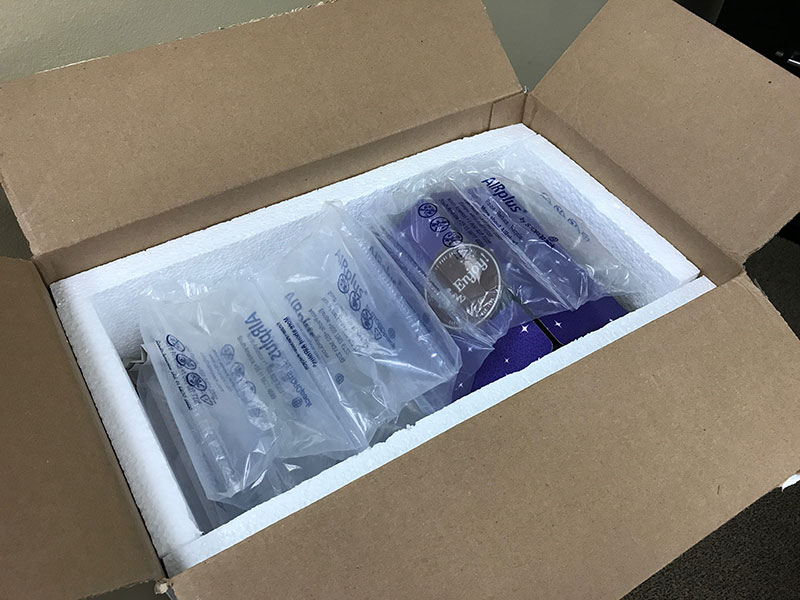By Nick Upton
After reading up on research, it might be easy to write off mail-order food completely as an expensive way to get sick. But while the industry as a whole has some work to do, the industry is completely safe when consumers and companies take a thoughtful approach to packing food for delivery by mail.
Both sides of the transaction must be educated about the risks and know what a product should look like when it hits the end consumer’s doorstep.
Companies
Companies need to be especially careful as more consumers experiment with getting their food by mail for the first time. No matter where these customers procure their first steaks, hot sauce, apples or brownies, they are really testing the whole industry. So a bad experience from anywhere means poor perception everywhere.
With the low barrier of entry to the industry (all that’s needed is a website) that’s probably distressing for the companies who hope to keep growing.
The first thing to address is food safety. If someone gets sick from anything via mail (or thinks they did) it’s likely the end of their mail-order experiences.
The USDA has strict guidelines for mail-order food, and it’s something any company in the industry should use as an absolute basic requirement. Rule No. 1 from the USDA is staying out of the danger zone of 40-140 degrees for more than two hours.
“Pathogenic bacteria can grow rapidly in the ‘Danger Zone,’ but they may not affect the taste, smell or appearance of a food. In other words, you cannot tell that a food has been mishandled or is unsafe to eat,” according to the USDA food shipping guide.
It also has guidance for packaging, in the accompanying graphic. This should be the basic path for any company shipping perishable food.
“Companies can do this and do this safely, but it right requires some training and it requires thinking through what it is you’re putting in the box, what’s the size of the box, what kind of coolant, where it’s being placed,” said Rutgers professor and researcher, Bill Hallman, who did a major study of mail-order protein. “It’s not as easy as throwing in a couple pounds of steak and throwing in a gel pack. Doing it right is more expensive.”
Then there’s quality, a mediocre experience isn’t as bad as e. coli, but a melted dessert or pulverized chips is a big turnoff.
While they don’t ship raw protein or produce, Fairytale Brownies does takes great care to package its decadent brownies. A box sent to the Food On Demand office arrived at refrigerator temperatures and looked like it followed the USDA’s suggested method for packing.
 The current packaging required a lot of testing over the company’s 25-year history. “It’s just something we’ve done trial and error over the years, that’s more a quality concern than food safety,” said Kim Silva, operations team lead at Fairytale Brownies.
The current packaging required a lot of testing over the company’s 25-year history. “It’s just something we’ve done trial and error over the years, that’s more a quality concern than food safety,” said Kim Silva, operations team lead at Fairytale Brownies.
Through the years, Silva and her team used a heat oven, real world tests and poured through endless feedback to zero in on the company’s method. Beyond the packing, they also have rules around when to ship. They don’t ship standard delivery on Thursday or Friday in the summer months to ensure that brownies aren’t sitting in a warehouse over the weekend. Silva said that emphasis on quality shipping has actually turned the higher cost of quality shipping into a marketing tool.
“They (customers) do appreciate the care that we take and they are especially appreciative of the ice packs we use, (so) we use that as a marketing tool. Some keep the foam boxes…so people really appreciate that because they are reusable.”
One thing covered in the various safety guidelines they follow is tracking.
Fairyland always follows the guidelines for tracking, she said. It’s something that Hallman pointed out that was lacking across the industry, even big names in the meal kit world make identifying and tracking quality issues a serpentine trip to nowhere.
“Under these food safety programs, you’re required to have some sort of tracking for these quality issues,” said Silva. “They want to see that you’re tracking that because that’s how you handle a recall if one were initiated.”
It’s a major growing pain that the meal kit industry especially is seeing. As they work with smaller and smaller producers to get trendy items from small farms, the industry is seeing some major growing pains.
“I think in some cases they’re grappling with challenges that have already been solved, and finding some new ones,” said Bill Michalski, chief product officer at Arrowstream, a supply chain logistics company. “There are a number of things, but a big thing is that these brands have focused on using small independent growers.”
He said as they chase consumer demands, meal kits need to figure out how to ensure that everything is safe and also how to trace products if something bad happens.
“To track products from front to back, you have to be able to track across all entities. The place that’s the most difficult are the small suppliers,” said Michalski. “For instance, if you have a local provider of product, are they going to have the wherewithal to put intelligent barcodes on their product. That’s something that the rest industry is grappling with right now and the meal kit industry needs to do.”
Without ensuring safety and a speedy recovery from any issues, the entire industry is at risk.
“A foodborne illness can shake an individual brand, but in the meal kit industry, if there are enough issues you could threaten the perception of the whole industry where consumers say, ‘It’s just not safe,’” said Michalski.
Consumers
Consumers play a big role here too. It’s impossible for any company to get a clear view of what happens between the production facility and the doorstep.
Hallman said its essential to remember these aren’t all safe and anything by mail should be treated with a little caution.
“One thing I would recommend is ordering from reputable companies who have been in business for a while. When the product is delivered look for damage to the package and look for leakage,” said Hallman.
While it might seem extreme, getting out a thermometer is a smart practice. Hallman and his team had a protocol of 10 temperature tests, but consumers probably just need to test the temperature of their product, especially if it might be in the USDA “Danger Zone.”
And if something is amiss, call the company. They may not make it easy, but navigating that maze is the only way these companies are going to get feedback.


